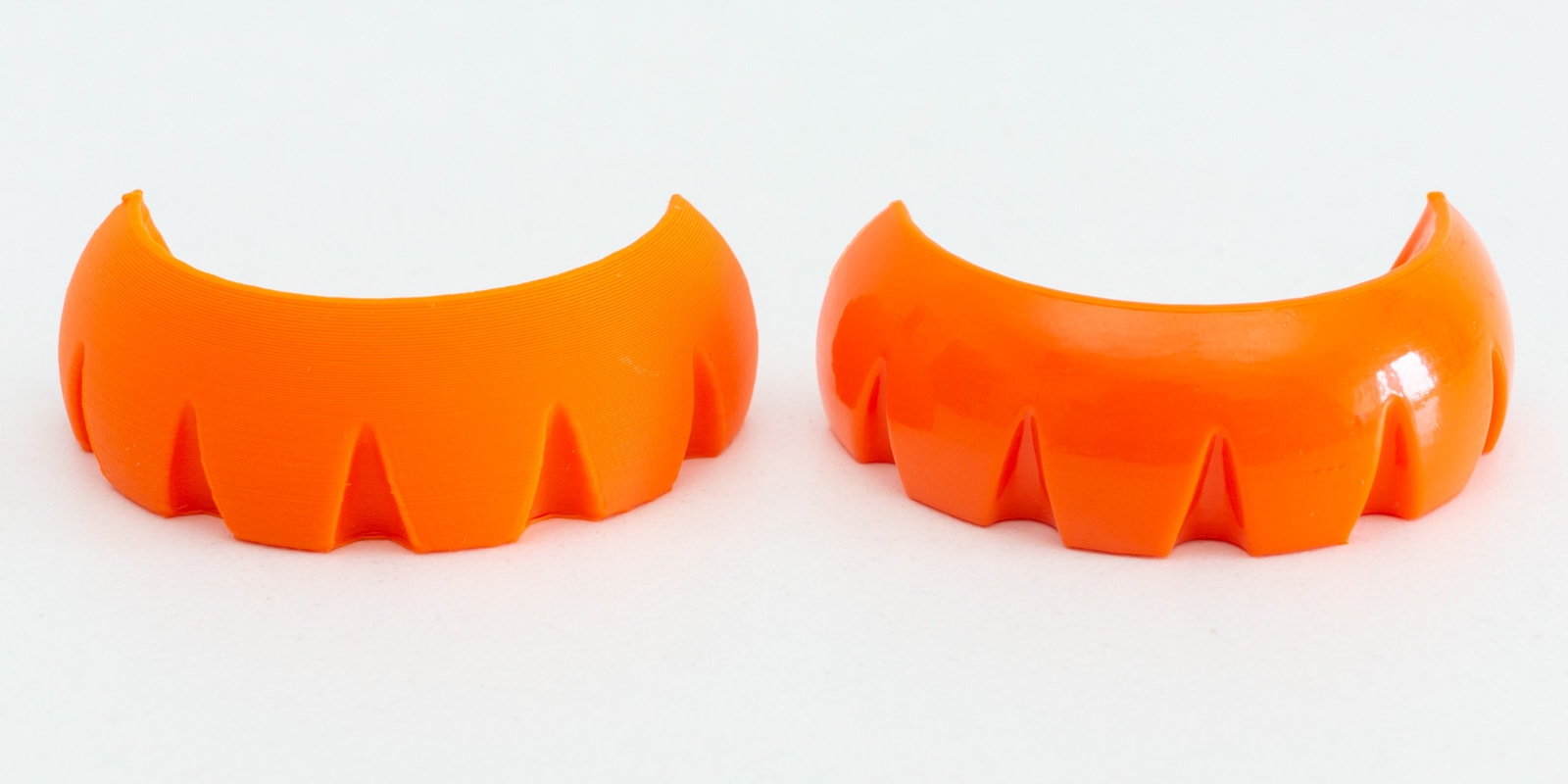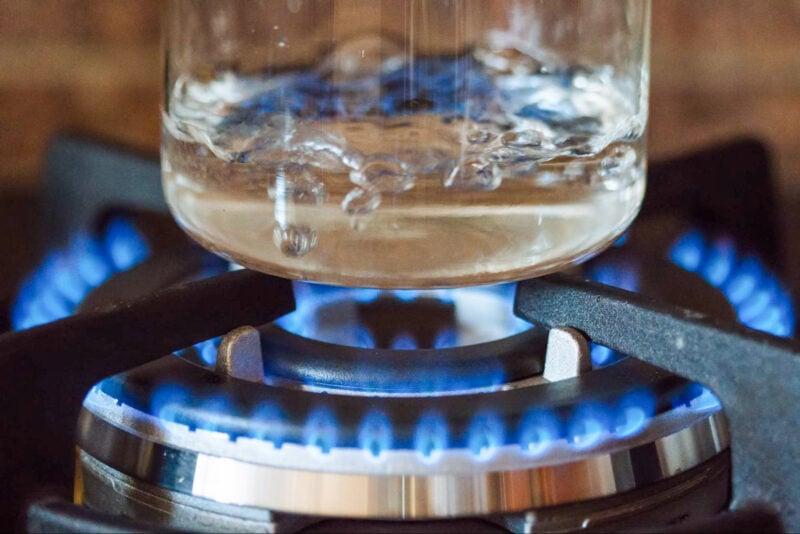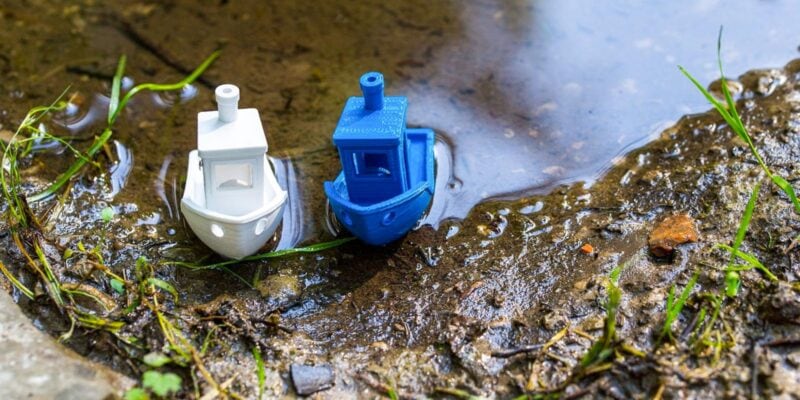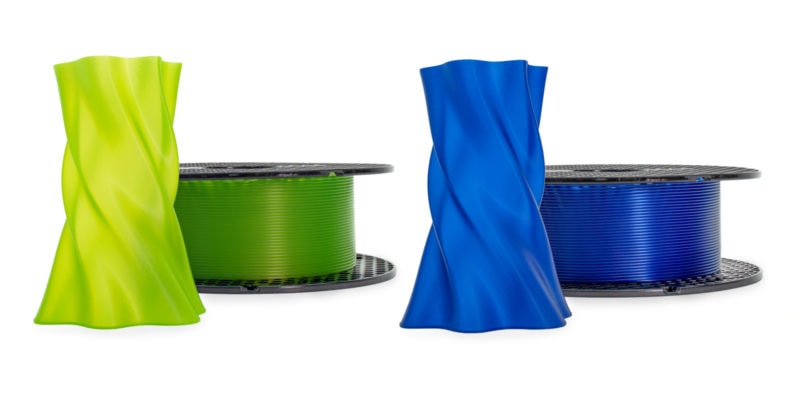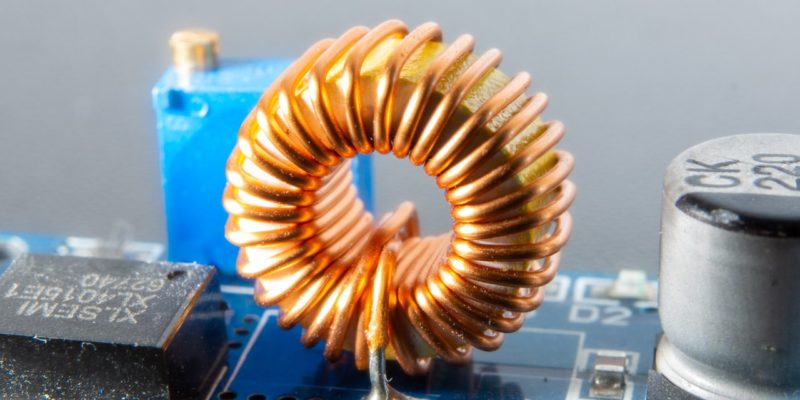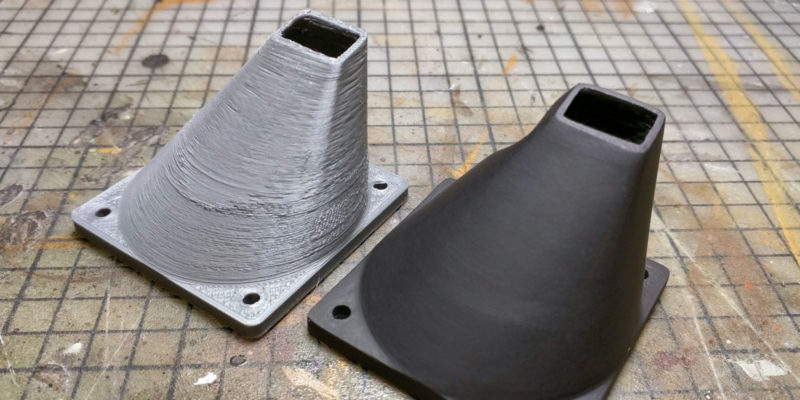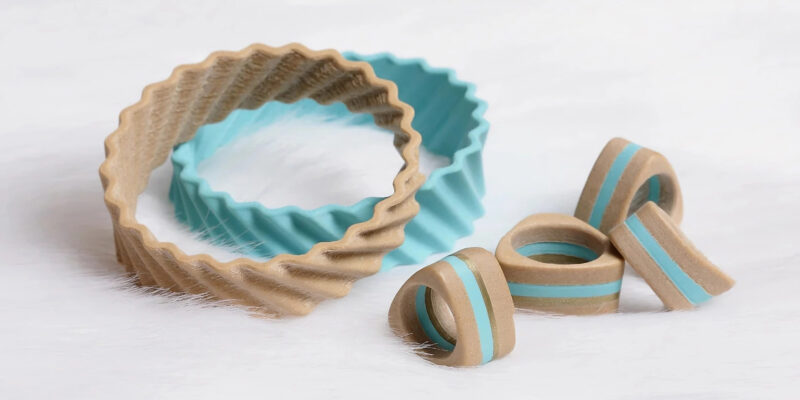PolyLactic Acid (PLA) is one of the primary plastic filaments in 3D printing. It’s easy to 3D print, affordable, and comes in many colors and varieties. And with its popularity, many users are always looking to get the best PLA 3D prints possible. You can choose to sand and polish your PLA prints or treat them with chemicals to get a smooth surface finish.
Just like there is the Acetone vapor smoothing treatment for ABS, you can use various chemicals and solvents to melt and dissolve PLA filament.
Let’s learn a bit more about these chemicals and how to melt PLA to get professional-looking parts with minimal effort.
What is PLA Filament?

What is PLA filament? It is a thermoplastic obtained from corn, cassava, sugarcane, or sugar beet pulp. The lactic acid in these plants is the main ingredient of the plastic, hence the name PolyLactic Acid.
PLA is a biodegradable plastic and is popular due to its affordability. It is one of the most commonly used filaments in 3D printing owing to its low melting point, good layer adhesion, and easy availability. It is widely used for 3D printing educational models, decorative pieces, aesthetic 3D prints, and applications where strength is not a significant criterion.
However, PLA filament is a relatively brittle material with low heat resistance. While some PLA varieties can be annealed to increase heat resistance, PLA’s inherent properties are challenging to alter.
You can, however, increase the strength of your PLA printed part by post-processing it with PLA solvents; this is where melting or dissolving the outer layer of your PLA prints proves helpful.
Why Dissolve PLA?
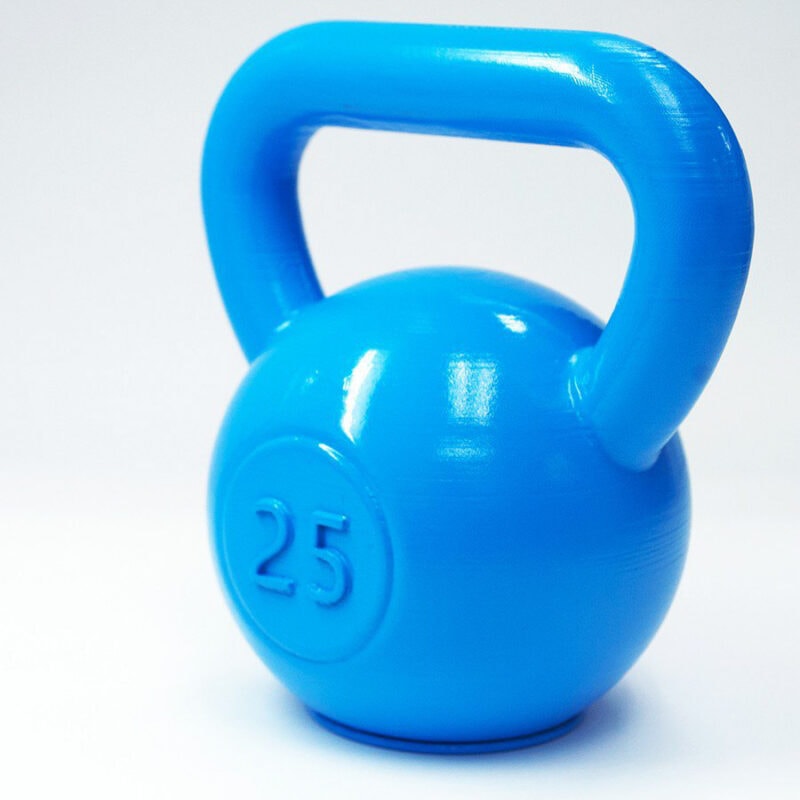
There are several reasons why you might want to melt or dissolve PLA prints. The most popular reason is to give your PLA prints a smooth surface finish.
Smoothing PLA filament is cumbersome and involves a lot of manual labor. Sanding and polishing PLA is a time-consuming task that can be challenging to get right, especially if you’re new to the process. However, it is an essential step before painting 3D prints.
An easier method is to dissolve 3D printed PLA parts on the outside by applying a layer of solvent on the surface. This melts and fuses the layer lines, resulting in a smooth PLA surface. The solvent removes any surface imperfections on your PLA-printed parts and enhances their appearance.
Another benefit of dissolved PLA is that it enhances the part’s strength characteristics. When the PLA layers melt together, any holes, cracks, or gaps in layer lines weld to each other; this reduces the chances of structural failures and gives the part a more uniform strength in all directions.
Dissolving PLA using chemicals also helps you clean your 3D printer nozzle more easily. The solvent will effortlessly melt and dissolve PLA filament bits stuck in your nozzle and unclog it.
Is PLA a Soluble Material?
PLA filament material is soluble in polar aprotic solvents (organic) such as ethyl acetate, dichloromethane, tetrahydrofuran, and Acetone. This study on the Effects of various liquid organic solvents on PLA demonstrates the effects of over 60 solvents on a PLA film. The conclusion is that PLA is soluble in several organic solvents.
How to Melt PLA Filament
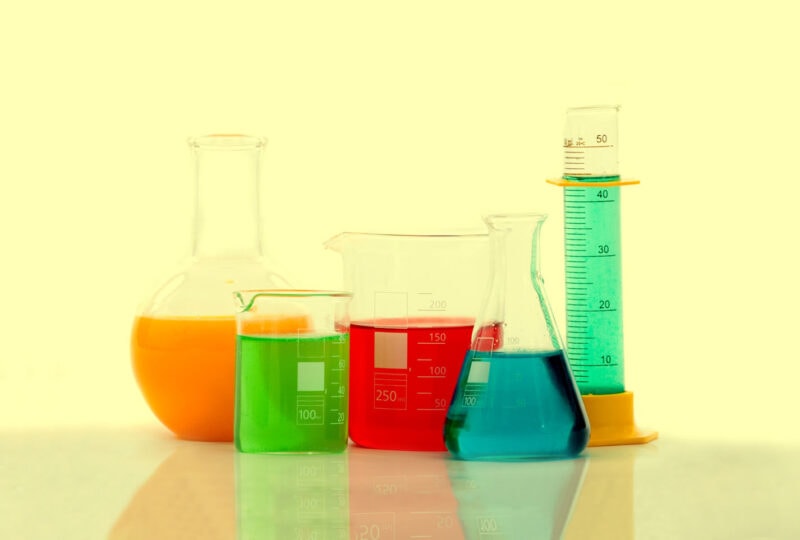
You can melt or dissolve PLA with several chemicals. The list includes Acetone, Ethyl acetate, Tetrahydrofuran (THF), Pyridine, and several others.
None of these are safe to work with without proper precautions, and we don’t recommend anyone try using them unless they know what they are doing. Melting and dissolving PLA with chemicals is a dangerous process that can lead to severe injuries if not done correctly.
Ethyl acetate
Ethyl acetate is one of the readily available solvents for dissolving PLA filament. It has a sweet odor, it’s affordable, and is less toxic, making it easy to use with essential safety equipment. It’s a compound of ethanol and acetic acid. Nail polish removers, glues, and perfumes are a few everyday things in which you’ll find ethyl acetate.
Ethyl acetate has a low boiling point, and you can use it to dissolve PLA using the vapor smoothing technique. The solvent evaporates quickly and leaves no trace on your part’s surface. Alternatively, you can apply a layer of ethyl acetate on your 3D printed PLA objects and get a smooth surface finish in less time.
But, Ethyl acetate is highly flammable, and overexposure to its fumes can irritate your eyes and nasal pathways. Therefore, you should always use a mask and eye protection when working with this chemical. Otherwise, it’s an excellent solution for dissolving PLA prints and getting a clean-looking part.
Pyridine
Pyridine is a highly flammable solution that can completely dissolve PLA filament, and it has a fishy odor with a colorless appearance. You can use a diluted solution of Pyridine with water and apply it to the top surface of your PLA prints to melt the layers together. You’ll need to leave your prints to dry before they’re ready for use again.
However, Pyridine is one of the most toxic chemicals to work with owing to its low flash point and dangerous side effects after short-term exposure. Working with Pyridine in a home environment is not recommended, as it can easily catch fire. It would be best if you also were careful to wear gloves and protective equipment while working with this chemical.
Tetrahydrofuran
Tetrahydrofuran (THF) is another commonly used solvent for dissolving PLA plastic. THF is an industrial-grade solvent and is used to dissolve PVC material. It is a colorless liquid, which has a strong odor and is a readily available solvent for dissolving PLA material.
You can use THF fumes in a vapor chamber to dissolve PLA surfaces. But, this method will require a significant amount of time and still might not be 100% effective. The best way is to apply several layers of THF directly on your PLA surface using a paintbrush and leave the print to dry overnight. This technique will give you good results and dissolve PLA layer lines.
Another way of using THF is to dissolve the filament bits in a clogged 3D printer nozzle. It would help if you immersed the nozzle in the THF solution and let it rest for a while. You can remove it after 3-4 hours and leave the nozzle overnight to dry completely.
Regarding safety, THF is a highly flammable liquid, and you need to be careful not to use it near any light source. You should use THF in a well-ventilated area (outdoors) and use glass safety goggles. You’ll need to use nitrile rubber gloves when working with THF, as latex gloves will melt if they come in contact with the chemical.
It is imperative to wear complete protective equipment as THF can easily penetrate your skin and cause rapid dehydration. THF is a highly dangerous chemical solvent; it’s more suited for use in industries and professional applications.
Dichloromethane
Dichloromethane (DCM), also known as Chloroform, is excellent for dissolving PLA as it quickly melts the layers together. You can directly apply DCM on your print or dip your part in the DCM solution to swiftly melt the upper surface of your PLA-printed piece. DCM will promptly react with PLA, and you’ll be able to see its effects in real-time.
Alternatively, you can use DCM with a vapor smoothing PLA to even out the part’s surface. You’ll have more control over the dissolving PLA filament, and you can finely adjust DCM’s exposure to PLA. This is more useful for smoothing PLA parts with intricate details, as it’s a slow and easy-to-control process.
Due to DCM’s highly reactive nature with PLA, you can use it to weld and glue PLA parts together. It’s handy to join large PLA parts after 3D printing and reduces the chances of part failure along the joint. There are better PLA glue options out there, however, so make sure to pick the best option for your needs.
You’ll need to be extremely careful while handling DCM as it can be quickly absorbed within the skin, causing irritation and chemical burns. A high-quality respirator mask, safety goggles, and PPE equipment will minimize the side effects of DCM on your body.
Sodium Hydroxide (Caustic Soda)
Sodium Hydroxide is a readily available PLA solvent that’s cheap, easy to use, and relatively safer than other chemical solvents. It’s commonly used as a cleaning agent in industries, detergents, and food preparation.
In 3D printing, you can use a diluted solution of Sodium Hydroxide to melt the PLA part’s surface. An NIH study found that this chemical is highly effective for the surface treatment of PLA. By altering the ratio of sodium hydroxide with water, you can finely adjust the level of surface erosion you need and obtain a smooth-looking surface in 3-5 hours.
You can either apply several layers of the diluted solution to your parts or use the vapor smoothing technique to get a finished surface. In either of the cases, you will need to leave your PLA print to dry off for at least 6 hours.
Like other chemicals, you must use protective equipment when working with caustic soda. It’s highly corrosive, and even slight exposure to the chemical will lead to burns on your skin.
Does Acetone Dissolve PLA?
Acetone doesn’t work well with PLA and will not dissolve pure PLA. Acetone is highly effective with ABS, but with PLA it will result in a sticky upper surface of your 3D print. Using other chemicals is better than treating your prints with Acetone.
Some cheaper PLA filaments can react with Acetone or even partly dissolve in Acetone because of questionable additives that they contain. The best PLA filament does not react, however. This is also the kind you want if you are looking to minimize harmful 3D printing fumes.
Can You Melt PLA in a Microwave?
PLA filament doesn’t react much to microwave radiation, and its temperature will not change noticeably in a running microwave. As a result, PLA will not melt in a microwave but might get slightly warm to the touch. Microwaving PLA will not yield smooth layers and you’ll still have visible layers on your PLA print.
Even if PLA filament would absorb microwaves well, it would start melting from the inside out. This would still not give the smooth surface you’re looking for.
Can Boiling Water Melt PLA?
Boiling water does not melt PLA. Boiling water has a temperature of 100 °C, whereas PLA filament melts at 180 °C and has a glass transition temperature of 65 °C.
At 100 °C, PLA becomes soft and deforms easily, making it easy to mold into any shape. So while boiling won’t melt or dissolve PLA, it can make the material smoother and easier to shape.
You can use boiling water to fix warped 3D PLA prints and repair them. This can be useful if you had problems with PLA not sticking to the bed while 3D printing.
Alternatively, you can “heat form” 3D printed PLA models to any shape you’d like, creating unique models that wouldn’t be possible to make with any other method.
As far as smoothing PLA goes, however, boiling water is not a good solution.
Can Isopropyl Alcohol Dissolve PLA?
Isopropyl Alcohol (IPA) has almost no effect on PLA, as it neither melts nor dissolves PLA filament. In CNC Kitchen’s video below, you’ll see that 70% IPA does not affect PLA, and the strength and appearance of the PLA printed part remain unaltered even after soaking it in IPA. That said, IPA does help clean your PLA prints and will remove any dirt and dust from its surface.
Polymaker’s Polysmooth PVB is an exception to this rule. This filament is formulated to be used with the vapor smoothing PLA technique to get a polished part with an even surface finish. This filament will be an excellent and safe alternative to using harmful and toxic chemicals to dissolve PLA layer lines.
How to Smooth PLA
While some of the chemicals above melt and dissolve PLA, there are others you can use to smooth PLA parts after 3D printing. For example, you can use XTC-3D, 3D Gloop, or a heat gun to get a smooth surface finish. These techniques are effortless, highly effective, and safer than chemical smoothing.
If you are looking to achieve a glass-like surface on your 3D printed PLA models, using one of these off-the-shelf solutions is often the way to go. Not only do these give better results, but they are also safer to use than raw chemicals that need to be handled with extreme care.
You can apply these on your printed piece right out of the 3D printer without the need for a complicated safety setup.
Another alternative is to print your 3D models at very low layer heights. You will have to optimize your PLA printing temperature for this, however.
Conclusion: Should you Dissolve PLA with a Solvent?
PolyLactic Acid (PLA) is an excellent 3D printing material, and you can easily post-process it using various methods. Melting and dissolving a PLA print can be done with chemicals like Sodium Hydroxide, DCM, and Ethyl acetate, but these are not safe to use and can cause serious harm if you’re not careful.
Other methods like heat gun smoothing, XTC-3D, 3D Gloop, and Polymaker’s Polysmooth tend to give much better results and are safe to use. As always, be sure to follow the safety instructions when working with any of these chemicals or materials.
What are your thoughts on melting and dissolving PLA? Have you tried to dissolve PLA 3D prints before? Let us know in the comments below.
